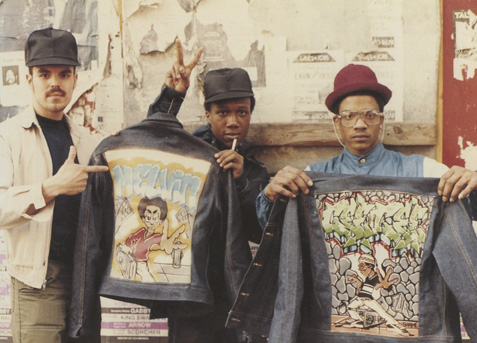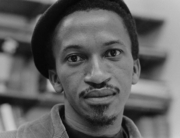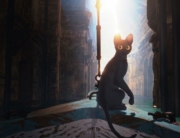For a documentary about fashion, Fresh Dressed has more to do with words than might be expected. Language was instrumental in the fortunes and failures of the major figures in the evolution of “fresh,” of what’s new and cool, from the hip-hop lyrics whose popularity helped fuel the clothing trends (as in “My Adidas” by Run-DMC) to the succession of (sometimes disparaging) terms used to try and describe the emerging style.
Director Sacha Jenkins has assembled an impressive collection of interviews with many figures who work in the intersection of music and fashion. They are interspersed with playful animation illustrating the styles being described, or defining the terms involved—in case you don’t know what a b-boy is.
The film takes some time to settle on a topic, starting with rapper Nas giving a brief history lesson on the fashion of African kings, which is followed by a whirlwind tour of early African-American culture. Things slow down in the summer heat of the 1970s Bronx. Gang members adopted distinct styles to identify themselves, becoming the forebears of FUBU, Phat Farm, and other urban labels. Neighborhoods were another category: those in the know could tell if someone was from Queens, Brooklyn, or Harlem simply by the way he dressed.
Entrepreneur Damon Dash offers a theory as to why fashion became so important in low-income neighborhoods. If you share an apartment with roaches and 10 people, he argues, what you wear is the only way to show (or feel) you have anything. Of course, no one suggests saving the money for a better apartment as an alternative. This may be because so many have a stake in the fashion industry. Still, Dash’s remarks, and those of others who went from rags to riches, give perspective on what poverty does to a creative spirit.
It can, for instance, inspire ingenuity. So it did for Dapper Dan, a designer who put high-end logos all over his work. He took haute couture and “blackenized it,” he says. “I made it look good for us.” The musicians involved are quick to point out the similarity to the sampling that was happening in hip-hop. The fashion houses eventually pointed out the similarity to copyright infringement, and Dapper Dan was shut down.
He likely lasted as long as he did only because he flew under the radar. But, according to one interview, rapping began as an alternative to the physical violence of gangs, and as that genre increased in visibility, so did the clothes. A boom happened in the 1990s that many took advantage of, including establishment designers like Tommy Hilfiger, who is said here to have given away merchandise to street kids (like a drug dealer offering the first taste for free) so that they’d work for him as walking billboards.
A few people comment on the fact that the rise of urban fashion became tied with fashion violence: now people could be, and have been, shot for their shoes. But this is merely touched on, as are most of the more serious issues of race and class. What are the different implications of calling a designer’s line “urban wear” or “street wear” or “gang wear,” and who gets to choose among them?
As with many trends, the successes bred failures (Eminem, for one, briefly had a spectacularly unpopular label), and soon the market was flooded. The end of the decade began a change: not only were the styles evolving, but also the most successful music artists were starting to adorn themselves in Gucci and Versace. The desire for neighborhood-based expression was supplanted by the desire for class distinction, which only the most storied brands can offer.
The most hopeful note for the future is sounded by Kanye West, who believes individuality is back on the rise. A guy who liked clothes used to be called gay, he says, but as the world becomes a more tolerant place, there is more room for fashionphiles to strut their stuff.







Leave A Comment